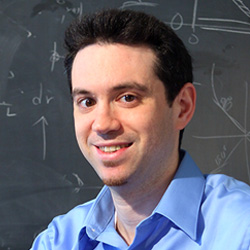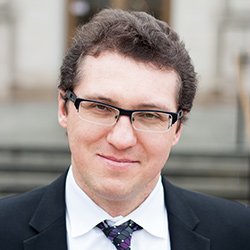Why are US Parties So Polarized?
New model shows why US political parties move to extremes while voters remain largely in the center
A quick look at social media posts shows how US political parties are increasingly polarized. Is this growing move to extremism due to a shift in voters’ views?
A new model developed by a team including Northwestern researchers shows it is not.
Instead, the study demonstrates that polarization stems from the two parties’ quest for voters. And, extremism is a strategy that’s worked even as the positions of the Democratic and Republican constituencies remain similar—and firmly in the center.

The study, “Why are US Parties so Polarized? A ‘Satisficing’ Dynamical Model,” appearing in SIAM Review’s printed September edition, was guided by the concept that voters are not looking for a perfect representative, but a “satisficing,” or “good enough,” candidate. If voters are satisfied with a candidate, that politician earns their votes. If a voter is satisfied with both candidates, the vote cast may go to either. But if voters don’t like either candidate, they simply don’t vote.
“Our assumption is not that people aren’t trying to make the perfect choice, but in the presence of uncertainty, misinformation, or a lack of information, voters move toward satisficing,” said Daniel Abrams, associate professor of engineering sciences and applied mathematics at Northwestern Engineering, and a member of the research team.
To accommodate voters’ “satisficing” behavior, the team developed a mathematical model using differential equations to understand how a rational political party would position itself to get the most votes. The tool is reactive, with the past influencing future behaviors of the parties.

The team tested 150 years of US Congressional voting data and found the model’s predictions are consistent with the political parties’ historical trajectories: Congressional voting has shifted to the margins, but voters’ positions have not changed much.
“The two major political parties have been getting more and more polarized since World War II, while historical data indicates the average American voter remains just as moderate on key issues and policies as they always have been,” Abrams said.
The team found that polarization is instead tied to the ideological homogeneity within the constituencies of the two major parties. To differentiate themselves, the politicians of the parties move further away from the center.
The new model helps explains why. The moves to the extremes can be interpreted as attempts by the Democratic and Republicans parties to minimize an overlap of constituency. Test runs of the model show how staying within the party lines creates a winning strategy.
“Right now, we have one party with a lot of support from minorities and women, and another party with a lot of support from white men,” said Adilson E. Motter, Morrison Professor of Physics and Astronomy at the Weinberg College of Arts and Sciences, and a member of the research team.
Why not have both parties appeal to everyone? “Because of the perception that if you gain support from one group, it comes at the expense of the other group,” he added.
“The model shows that the increased polarization is not voters’ fault,” Motter added. “It is a way to get votes. This study shows that we don’t need to assume that voters have a hidden agenda driving polarization in Congress. There is no mastermind behind the policy. It is an emergent phenomenon.”
The lead author is Vicky Chuqiao Yang, who started the work as Abrams’ graduate student before joining the Santa Fe Institute as a postdoctoral fellow. Georgia Kernell, from the University of California, Los Angeles, is another author. The researchers caution that many other factors—political contributions, gerrymandering and party primaries—also contribute to election outcomes, which future work can examine.
The work challenges a model introduced in the late 1950s by economist Anthony Downs, which assumes everyone votes and makes well-informed, completely rational choices, picking the candidate closest to their opinions. The Downsian model predicts that political parties over time would move closer to the center.
However, US voters’ behaviors don’t necessarily follow those patterns, and the parties’ positions have become dramatically polarized.
“People aren’t perfectly rational, but they’re not totally irrational either. They’ll vote for the candidate that’s good enough—or not too bad—without making fine distinctions among those that meet their perhaps low bar for good enough,” Abrams said. “If we want to reduce political polarization between the parties, we need both parties to be more tolerant of the diversity within their own ranks.”